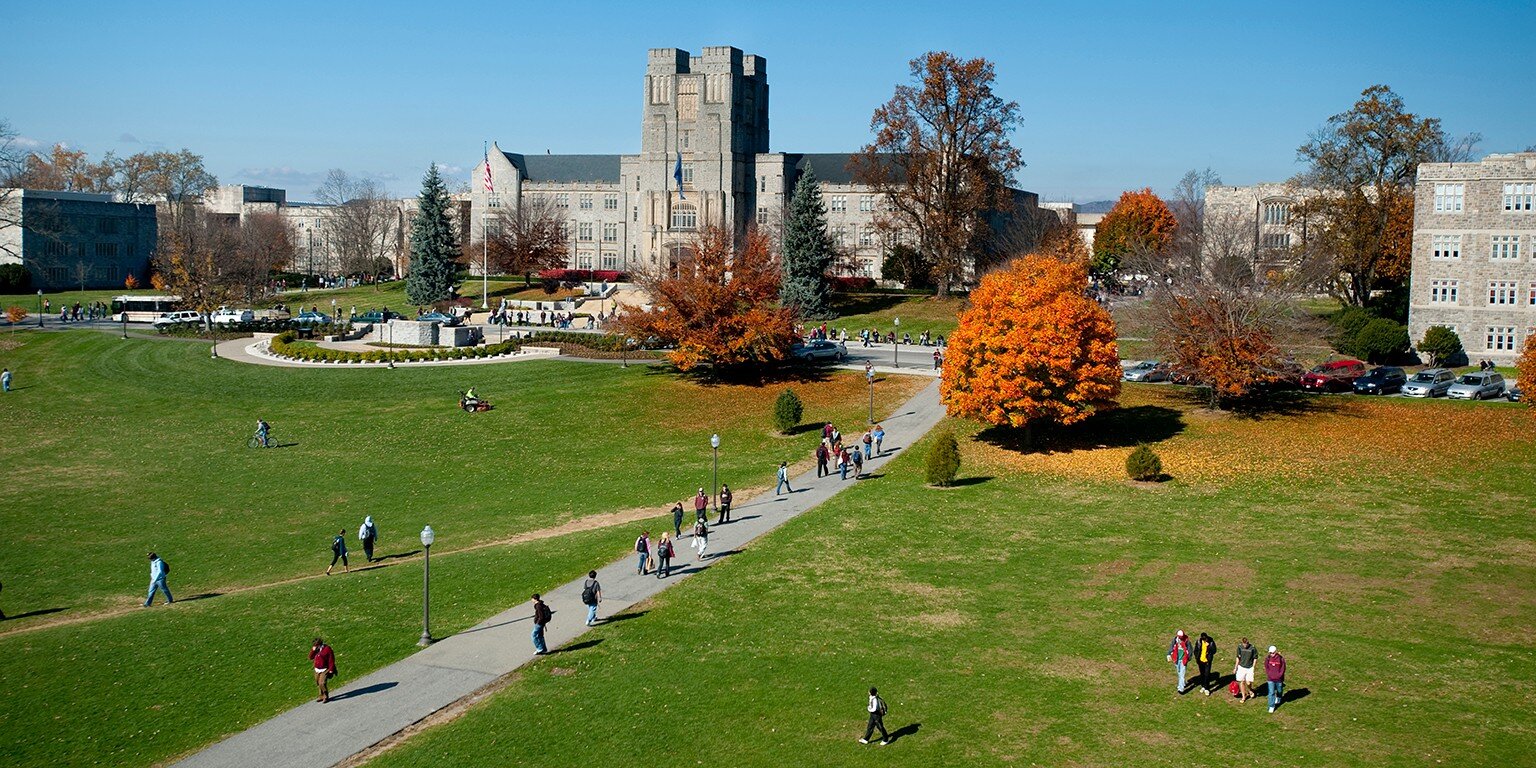EXHIBIT
SOLITUDE
THE HEART OF VIRGINIA TECH
In this exhibit you can explore the different phases of Solitude’s history. We begin during the period when this place was indigenous land, and go on to explore its history as a slave plantation in the nineteenth century.
Thousands of years before Virginia Tech was established, Native peoples were custodians of Virginia land. The societies that would eventually form the Monacan and Tutelo nations practiced agriculture and traded with their neighbors near and far. When European people created settlements in Virginia, these Native nations kept their distance. This distance, along with the lack of documentary evidence, has made it difficult for historians to be certain about who lived on exactly which land. The Monacan nation flourished in the Piedmont and mountains. Around 15,000 Monacans inhabited towns that expanded north and west of their capital, Rassawek, by the start of the seventeenth century. Monacans constructed thatch homes where they permanently resided, as well as smaller temporary buildings in hunting towns. Monacan men hunted for bear and deer meat while the Monacan women foraged and farmed pumpkins, squash, corn, beans, and other crops. Trade flourished between the Native people and European settlers.
With limited records and documents, historians have determined that many of the Natives who occupied land west of Richmond spoke dialects classified as “Eastern Siouan”. During the early eighteenth century, several Indian nations moved to Fort Christanna, located in today’s Brunswick County, Virginia. Fort Christanna was created by European settlers to educate and protect Native people, and settlers recorded words and phrases of the residents there. Another Siouan group, the Tutelo, also migrated and joined the Cayuga Nation of the Iroquois in the 1700s. In the twentieth century, anthropologists were able to record some of the vocabulary of some of the last native Tutelo speakers. Captain John Smith's Map of Virginia 1607 Library of Congress, Geography and Map Division. Horatio Hale, "The Tutelo Tribe and Language" is an article from Proceedings of the American Philosophical Society, Volume 21. Map of Shawnee in Virginia
Library of Congress, Die Vereinigten Staaten von Nord-America (William Faden, 1783) The Shawnee Nation was another indigenous group that exerted influence in the New River Valley region of Virginia. The Shawnee originated in Ohio, although historians have discovered that they were driven away by the Iroquois in the seventeenth century. By the eighteenth century, the Shawnee had learned to become adept travelers in both colonial and Native worlds. They lived alongside and sometimes engaged in war with many different Native societies along with Spanish, French, and English colonizers. Tension increased between these groups as the French and Indian War (1754-1763) escalated and English families began to establish settlements in the New River Valley.
Shawnee Iron Pipe Tomahawk Smithsonian Institute Collections Search Center In 1745, James Patton was granted 10,000 acres of land in the New River Valley. Many other European families also moved to the region and began to build their homes on Shawnee hunting and farming ground. On July 8, 1755 the French-allied Shawnee retaliated against the new settlers of Draper’s Meadow-- site of the Draper and Ingles homesteads. The raid resulted in the deaths of five English subjects, and the settlements were abandoned. The Prestons later built Smithfield Plantation on the site, and Virginia Tech stands on the tract today.
James Patton Grant: Map of Land Patents Acquired in the 1740's in Augusta County, Virginia
“James Patton Grant" Draper's Meadow Monument on Virginia Tech Campus
“The Impact of the French and Indian War on Settlement West of the Blue Ridge.”
THIS IS HOME: WHOSE HOME? THE FRACTION BROTHERS FIGHT FOR FREEDOM RACE AT SOLITUDE AFTER THE CIVIL WAR BIRTHPLACE OF VIRGINIA TECH RESTORING A HISTORIC LANDMARK









